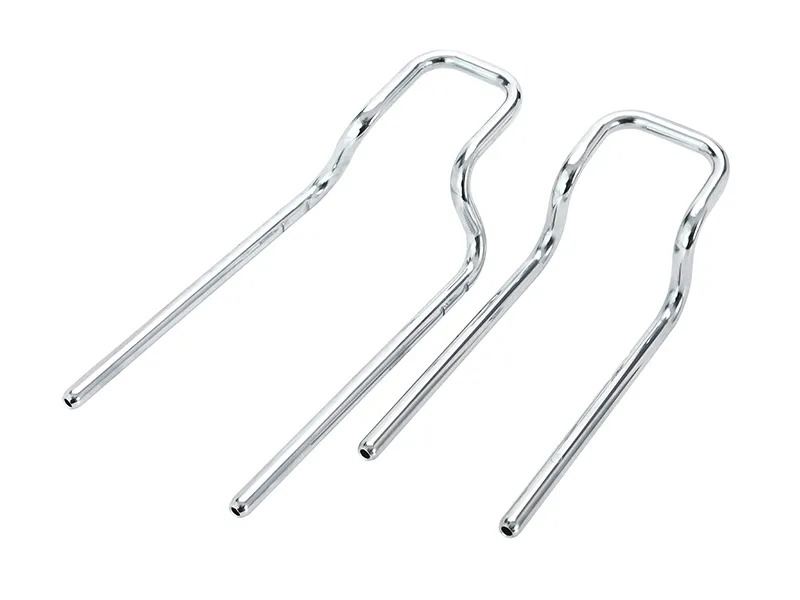Reserve Tube
2 月 . 14, 2025 18:07

Sanitary tube welding represents a pivotal junction between engineering precision and hygiene, a niche yet critical component in industries ranging from pharmaceuticals to food and beverage production. The paramount importance lies not only in the secure transport of liquids but, more crucially, in maintaining sterility and ensuring the highest standards of hygiene. Herein lies a discourse that delves into the multifaceted aspects of sanitary tube welding, crafted from a vantage of deep-seated expertise, authoritative precision, and authentic experiences that underline its indispensable role.

The fundamental essence of sanitary tube welding is entrenched in the seamless integration of tubing systems that eschew contamination. This involves a keen understanding of welding techniques, particularly the nuances of autogenous welding methods like TIG (Tungsten Inert Gas) welding. This process, revered for its precision, is devoid of filler material, ensuring smooth, clean surfaces critical for hygiene-sensitive environments. The absence of filler material in TIG welding is particularly advantageous in sanitary applications, as it minimizes potential contamination points, thereby upholding sterility.
A pivotal factor in sanitary tube welding is the material selection. Stainless steel, with its robust corrosion resistance and ease of cleaning, emerges as the material of choice. The grade of stainless steel, often 304L or 316L, is selected based on its compatibility with the substances it will transport and the required level of corrosion resistance. 316L, enriched with molybdenum, offers superior resistance to corrosion and pitting, particularly in saline environments, thereby ensuring longevity and reliability. This choice is corroborated by metallurgy experts who emphasize its favorable properties in high-purity and corrosive environments, further underscoring the authoritative endorsement of its use in sanitary applications.

Welding techniques should be executed by experienced professionals who possess not only the technical welding skills but also a comprehensive understanding of sanitary standards and regulations. This requirement is not simply bureaucratic; it is the backbone for operational integrity and safety. Certifications such as ASME BPE (The American Society of Mechanical Engineers Bioprocessing Equipment) assure compliance to industry standards, an assurance rooted in years of industry-wide expertise and real-world application.
sanitary tube welding
In practice, the validation of weld integrity is a critical step post-welding to ensure no compromise on quality or safety. Techniques such as boroscopy allow for visual inspection of the weld's internal surface, enabling the detection of defects like cracks or inclusions that could harbor bacteria. Additionally, non-destructive testing (NDT), such as radiographic or ultrasonic testing, can be employed to ascertain the structural soundness of the weld. These methods validate welding integrity without altering the material, thus preserving its sanitary nature.
A practical consideration in sanitary tube welding, often highlighted by professionals, is maintaining the optimal weld profile, particularly ensuring the root is consistently smooth with no crevices. Crevices can become breeding grounds for microbial life, an unacceptable risk in any hygienic application. Meticulous weld bead placement, coupled with the use of purging gases during welding, aids in preventing oxidation, further contributing to the maintenance of a smooth, impervious surface crucial for hygiene.
Documentation and traceability play an integral role in the welding process. Comprehensive records of the welding parameters, materials used, and testing results become indispensable, forming part of a quality assurance protocol that enhances the traceability and accountability of the process. This aspect not only contributes to trustworthiness but becomes a reference point during audits and inspections, thus reinforcing the reliability of the entire operation.
In summation, sanitary tube welding stands as a bastion of precision, hygiene, and reliability, bridging the gap between complex engineering requirements and uncompromising sanitary standards. Through expert execution, authoritative material choices, and rigorous quality assurance protocols, the process exemplifies trustworthiness—a hallmark of industries dedicated to safety and quality. Engaging deeply with these principles not only fortifies operational integrity but also ensures compliance, customer trust, and ultimately, the seamless functioning of hygienic systems that serve critical industry needs globally.


